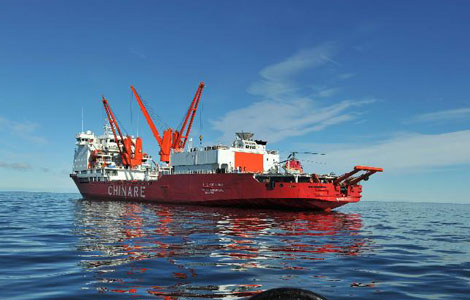WB scenarios for end of taper show China little affected
Updated: 2014-01-16 10:30
(Xinhua)
|
||||||||
Over the last few years capital flows have been rising to sub-Saharan Africa, to the point where it is now the region which receives the greatest capital flows, expressed as a percentage of its GDP, said Burns.
However, China was relatively unaffected in the overall process, said Burns.
He added, "That is a little bit unexpected, because we have the sense of China being a major player a major recipient of capital flows."
"Part of the answer lies in the nature of the capital flows China receives. They are heavily weighted toward foreign direct investment, much less in terms of bond flows or equity flows which are the kinds of capital flows which are most sensitive to the type of tapering we are likely to observe," said Burns.
China is not as directly impacted as other economies in the region such as Thailand, Indonesia, Malaysia or Vietnam, he said.
The report forecast that the most likely scenario was for the taper to follow a relatively orderly trajectory, and for global interest rates to rise only slowly, reaching 3.6 percent by 2016.
The impact of an orderly tightening of financial conditions on developing-country investment and growth is expected to be modest, with capital flows to developing countries projected to ease from about 4.6 percent of developing country GDP in 2013 to 4.1 percent in 2016, as investors take advantage of higher yield in high-income countries.
Global GDP growth was forecast to rise from 2.4 percent last year to 3.2 percent this year, stabilizing at 3.4 and 3.5 percent in 2015 and 2016.
Growth in developing countries in 2013 was relatively weak at an estimated 4.8 percent, but has been firming in recent months. This partly reflects strengthening growth in high-income countries, but also a recovery from earlier weakness in large middle-income countries such as India and China.
Growth in developing countries is forecast at 5.3 percent this year, and 5.5 percent and 5.7 percent for 2015 and 2016.

 138th Westminster Kennel Club Dog Show to open
138th Westminster Kennel Club Dog Show to open
 Volcano displaces thousands in Indonesia
Volcano displaces thousands in Indonesia
 China issues fog alerts
China issues fog alerts
 Stray cats on the way to be slaughtered saved
Stray cats on the way to be slaughtered saved
 Guangdong eases way home for workers
Guangdong eases way home for workers
 Wuhan overpass swings into place
Wuhan overpass swings into place
 Detroit auto show features fuel-efficient cars
Detroit auto show features fuel-efficient cars
 Palestinian students show military skills
Palestinian students show military skills
Most Viewed
Editor's Picks

|

|

|

|

|

|
Today's Top News
Majoring in anti-money laundering
China's airlines ready for rush
Draft law: Clean up air or pay fine
Park venues targeted in corruption drive
IMF faults Congress' budget
Year of the Horse stamp issued
China seeks to calm US fears over missile
Doubt on Tokyo's diplomatic push
US Weekly

|

|








